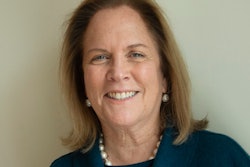Community college has proven to be an access point for underrepresented groups, with an earned reputation of affordability, accessibility and flexibility. As the number of Hispanic students enrolling in college continue to rise, priorities around increasing ethnic leadership must be addressed. In 2017, the American Council on Education, American College President Study reported 4% of College Presidents were Hispanic/Latino.
Studies have shown the importance of having a leadership team reflective of the student population to enhance the success of all students. This is particularly helpful with Hispanic students, who continue to fall behind in completion rates compared to other ethnic groups. The community college world recognizes the challenge but how do Hispanic leaders get there?
According to the Postsecondary National Policy Institute, 48% of Hispanic college students are first-generation — more than any other racial group. First-generation students often become first-generation professionals. The lack of experience and knowledge that parents or guardians can provide their child carries into the professional realm as well, leaving first-gen professionals to navigate uncharted territory alone, again.
 Natalie C. Villarreal
Natalie C. Villarreal
In 2019, Dr. Natalie C. Villarreal had the opportunity to interview community college professionals who identified as Hispanic and who are currently advancing within community college administration across the country. The research, reinforced by Dr. Steven R. Gonzalez, interim chancellor for the Maricopa Community College District, was to better understand the Hispanic community college leader. Participants shared their experiences with working in academia, offering a mix of inspiration and frustration as they try to navigate careers in higher ed.
What culminated from these rich anecdotes were recurring themes and a compass for current Hispanic leaders who are considering advancement to the President/CEO/Chancellor position in higher education.
Social Capital















